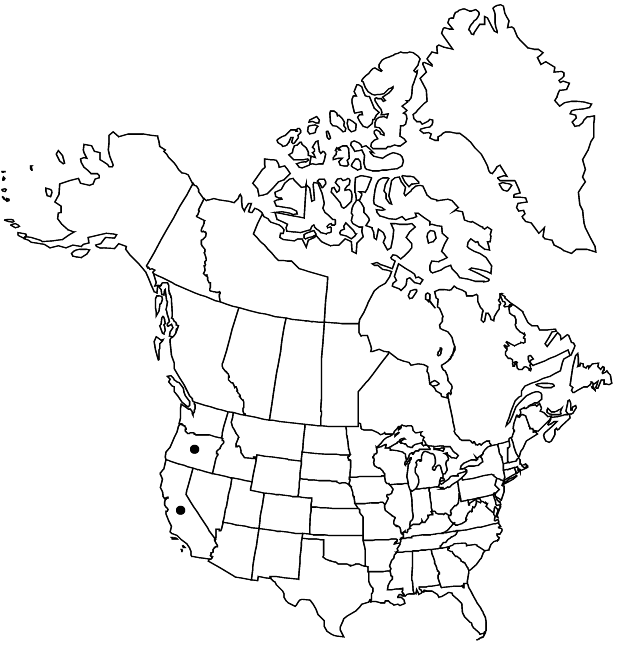Difference between revisions of "Ribes binominatum"
Cat. N. Amer. Pl., ed. 2, 5. 1900 ,.
FNA>Volume Importer |
FNA>Volume Importer |
(No difference)
| |
Revision as of 23:02, 16 December 2019
Plants 0.1–1 m. Stems spreading to prostrate, pubescent; spines at nodes 3, 5–20 mm; prickles on internodes absent. Leaves: petiole 2–5 cm, puberulent to villous and stipitate-glandular; blade suborbiculate, 3–5-lobed, deeply cleft, 2–5 cm, base cordate, surfaces pubescent, not stipitate-glandular, lobes broadly cuneate, sides mostly straight, margins dentate-crenate, apex rounded. Inflorescences pendent, solitary flowers or 2–3-flowered racemes, 1–4 cm (much shorter than leaves), axis hairy, flowers evenly spaced. Pedicels not jointed, 1–2 mm, bristly; bracts lanceolate-ovate, 1.5–3 mm, puberulent. Flowers: hypanthium green, broadly campanulate, 2–3(–4) mm, pubescent; sepals not overlapping, reflexed, greenish white to green with red margins, lanceolate, 4–6 mm; petals nearly connivent, erect, white to pink, oblong, flat or shallowly concave abaxially, 2–3 mm; nectary disc not prominent; stamens longer than petals; filaments slightly expanded at base, 2–4 mm, glabrous; anthers reddish brown, oval, 0.2–0.5 mm, apex blunt; ovary densely bristly and glandular; styles connate 1/2 their lengths, 2–4 mm, glabrous. Berries palatability not known, yellow-green, ovoid, 8–10 mm, prickles yellow, nonglandular, stout, developing into spines, hairs glandular or eglandular.
Phenology: Flowering Apr–Jul.
Habitat: Montane and subalpine forests
Elevation: 1000-2600 m
Discussion
Of conservation concern.
Ribes binominatum occurs at relatively high elevations in the Coast Ranges of northern California and the Klamath Mountains of central and southern Oregon.
Selected References
None.
